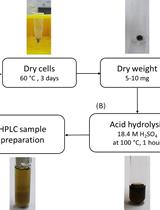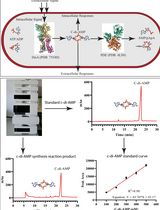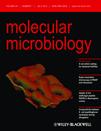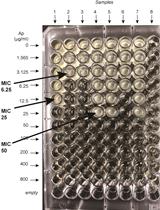- EN - English
- CN - 中文
Cytotoxicity Assay for Detection of Cereulide Produced by Emetic Bacillus cereus
采用细胞毒性分析法检测蜡样芽孢杆菌呕吐毒素Cereulide
发布: 2013年01月20日第3卷第2期 DOI: 10.21769/BioProtoc.318 浏览次数: 12709

相关实验方案

酸水解-高效液相色谱法测定集胞藻PCC 6803中聚3-羟基丁酸酯的含量
Janine Kaewbai-ngam [...] Tanakarn Monshupanee
2023年08月20日 1222 阅读

基于高效液相色谱法的史氏分枝杆菌DisA环二腺苷酸(C-di-AMP)合成酶活性研究
Avisek Mahapa [...] Dipankar Chatterji
2024年12月20日 1021 阅读
Abstract
The emetic subgroup of Bacillus cereus strains produces cereulide, a dodecadepsipeptide (1.2 kDa), which is the causative agent of food poisonings. Cereulide is synthesized by a nonribosomal peptide synthetase (NRPS), the Ces-NRPS (Ehling-Schulz et al., 2006). Cereulide is a cyclic and lipophilic potassium ionophor structurally related to the macrolide antibiotic valinomycin. Both substances act on mitochondria by depolarization and uncoupling of ATP synthesis, and this effect (mitochondrial swelling) is used to quantify cereulide in a HEp-2 cell based viability assay.
In this protocol, which was modified from an assay published by Finlay et al. (1999), valinomycin is used as a reference standard for ionophor–induced cytotoxicity, because purified cereulide is not commercially available yet. This assay has been used to quantify cereulide amounts from different B. cereus mutants (Lücking et al., 2009; Frenzel et al., 2012) and to estimate cereulide levels extracted from foods (artificially) contaminated with B. cereus (Frenzel et al., 2011).
Materials and Reagents
- Bacillus cereus F4810/72 (or other cereulide producing, emetic B. cereus strain)
- Tryptone
- Yeast extract
- NaCl
- HEp-2 cell line (Frenzel et al., 2011)
- MEM Earle′s medium (with 2.2 g/L NaHCO3, with stable glutamine) (Biochrom, catalog number: FG0325 )
- Penicillin-streptomycin solution (10,000 μg/ml; Biochrom, catalog number: A2212/3 )
- Sodium pyruvate solution (Biochrom, catalog number: L0473 )
- Fetal bovine serum (FBS) (Biochrom, catalog number: S0113 )
- Phosphate Buffered Saline (PBS) (Biochrom, catalog number: L1825 )
- 99% Ethanol (highest purity grade available)
- WST-1 cell proliferation reagent (Roche, catalog number: 05015944001 )
- Valinomycin (reference standard) (Sigma-Aldrich, catalog number: 94675 )
- 10x Trypsin/EDTA solution (0.5 %/0.2 %) (Biochrom, catalog number: L2153 )
- LB-Miller (see Recipes)
- MEM-Earle HEp-2 medium (see Recipes)
- MEM-Earle HEp-2 medium with ethanol (see Recipes)
Equipment
- 30 °C incubator with aeration (for liquid bacterial cultures)
- 37 °C incubator with 5% CO2 (for HEp-2 cell cultures)
- Spectrophotometer
- Table top centrifuge
- Microplate shaker
- Microscope and counting chamber for cell culture
- Microscope and counting chamber for bacteria (e.g. Helber counting chamber; depth: 0.02 mm; small square area: 0.0025 mm2)
- Multichannel pipet (8 channels, manual or electronic; e.g. Transferpette®, BrandTech Scientific 10-200 μl; catalog number: 2705410 )
- Microplate reader (multiwell scanning spectrophotometer)
- 500 ml baffled flask
- Tissue culture flasks with filter caps, 75 cm2 (Biochrom catalog number: P90076 )
- Safe seal tubes (e.g. Eppendorf, catalog number: 0030120.094 ) 96-well cell culture plates, polystyrene (Biochrom, catalog number: P92696 )
Procedure
文章信息
版权信息
© 2013 The Authors; exclusive licensee Bio-protocol LLC.
如何引用
Frenzel, E. and Ehling-Schulz, M. (2013). Cytotoxicity Assay for Detection of Cereulide Produced by Emetic Bacillus cereus. Bio-protocol 3(2): e318. DOI: 10.21769/BioProtoc.318.
分类
微生物学 > 微生物生物化学 > 其它化合物
您对这篇实验方法有问题吗?
在此处发布您的问题,我们将邀请本文作者来回答。同时,我们会将您的问题发布到Bio-protocol Exchange,以便寻求社区成员的帮助。
提问指南
+ 问题描述
写下详细的问题描述,包括所有有助于他人回答您问题的信息(例如实验过程、条件和相关图像等)。
Share
Bluesky
X
Copy link









